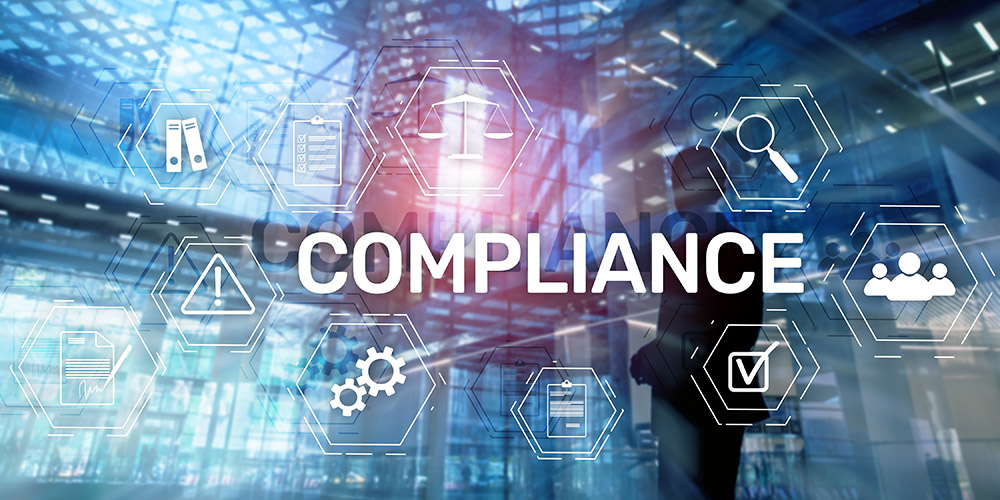
Nov 13, 2019 | SMB Technology, SMB Technology, SMB Technology, SMB Technology, Technology News
With so many organizations generating data in the course of daily business, it’s more important than ever to protect it from loss or compromise. Data breaches are frequently in the news, and aside from the negative publicity, result in fines and loss of revenue for companies. Maintaining network compliance is critical for all businesses. Read on to learn how to protect your company from this costly scenario. Network Compliance is Helpful to a Company’s Security Security has to do with a company’s own technology assets, whereas compliance can be defined as a company adhering to policies and procedures. For most companies, network compliance may be scheduled backups, operating system patching and anti-virus updates. For companies with regulatory requirements of a third party, such as a government or industry compliance involves more than simply protecting an individual company’s assets, though doing this can be helpful in progressing toward compliance. Industries can have strict regulations; HIPAA, for example, protects the privacy of patients’ health care data. Another category, which serves as a standard, is Payment Card Industry Data Security Standard (PCI-DSS); it protects the payment card data of people shopping online. These industry regulations carry strict requirements for the protection of personal data, and company networks must comply or face penalties. With threats abounding, such as malware and viruses, or simply a hole in the network, a network’s protection is crucial. Ways to Keep Your Network Secure and in Compliance One way to get a baseline for evaluating the security and compliance of your network is to conduct a network audit, taking an inventory of the network itself along with all...

Jan 9, 2018 | SMB Technology, SMB Technology, SMB Technology, SMB Technology, Technology News
The technology industry is working to patch two network security flaws known as Meltdown and Spectre Vulnerabilities. These hardware bugs can expose information being processed or stored in memory on your computer. While there are no known exploits, malware or phishing schemes specific to these network security vulnerabilities, this reminds us of the importance of Network Security best practices to protect Windows PCs and Macs, as well as Android and Apple iOS Mobile Devices. While the industry rushes to patch these network security vulnerabilities, here are some considerations to protect your network. Keep your Operating Systems Patches Up to Date Make sure you install security updates for your operating system and applications. Apple (AAPL), Google (GOOG), and Microsoft (MSFT) have already released some patches. You can do this manually through automated updates, or subscribe to a managed service to keep your network current. Keeping your browser up to date will also prevent websites from attacking your processor to steal your password and other privacy data. Don’t Forget Updates on Mobile Devices The Meltdown and Spectre Vulnerabilities serve to remind us of the importance of keeping smartphones, tablet computers, and other mobile devices updated with the latest operating system and related security patches. Also, remember to download software only from trusted sources. Employers should remember to review acceptable use policies to ensure they are up to date and that employees comply with company mobile device acceptable use. Train Your Employees on the Importance of Network Security Your employees are on the front line of defense for network security. Through periodic education and training your employees will implement strong passwords and...
Aug 10, 2017 | SMB Technology, Technology News
Your network is the backbone of your IT Infrastructure. Your network health is also an integral part of your defense against Cyber threat. Cloud Computing, Communications and Collaboration, Data Protection, and Digital Transformation put more reliance on your network. This begs the question, how is your network health? Ask yourself these three questions to find out the answer… How Well Does Your Network Perform? You rely on your network to communicate with your employees, customers, prospects, and suppliers. What’s more, your network links your company to public and private cloud services and applications that are critical to your business operations. Performance bottlenecks from social media, streaming applications, faulty hardware, and lost connections can impact your employees’ productivity. Offsite backup and other IT functions also rely on your network. Ensuring network health keeps systems running smoothly and available when you need them. How Secure is Your Network? Network security is an imperative for businesses of all sizes. Your business may face additional compliance requirements–for example, Payment Card Industry Data Security Standard (PCI DSS). Data protections standards are rapidly evolving, which could increase your responsibility and exposure to fines and penalties. General Data Protection Regulation (GDPR), the European Union’s data protection rules, could apply to your business regardless of your location. Keeping your network in compliance through monitoring, endpoint protection, content filtering, and other network security detection and protection technologies is a good start. Train your employees on the implications of phishing emails and how to identify one. Teach them to avoid malicious links in unsolicited scam emails. Underscore the importance of a strong password and steps to take to keep...
Jul 18, 2017 | SMB Technology, Technology News
Reputation Management is a hot topic in the boardroom these days. Having a solid business continuity plan could make or break your company’s ability to survive a data breach or other systems failure that could tarnish your hard-earned reputation. Company news about data loss, systems downtime and other unplanned interruptions occur with regularity. According to technology research firm Gartner, a business that has a catastrophic data event has a two-year survival rate of just 6%. Surprisingly, your company can avoid these scenarios by having a solid BC/DR Plan. It is no surprise that recent research by MarketsandMarkets forecasts the spend on DR as a Service (DRaaS) to grow from $1.68 Billion in 2017 in revenue to $11.11 Billion by 2020. Read on to find out how a Business Continuity Plan could save your business. Understand Your Business Continuity Risk and Exposure A great place to start with Business Continuity planning is a review of your company policies and procedures. Your business continuity policies should — in addition to identifying the technical standards for managing your company’s applications, data, and related infrastructure — should identify acceptable risk, what your employees will do in a disaster recovery scenario, and identify any compliance requirements. It is important to understand what information is most important and to consider the risks of suffering a data loss. What would be the impact to your revenue, productivity and reputation? If you could not access your information, or it was subject to data breach, how may that impact your customers’ trust and your business’s reputation? An Ounce of Planning is Worth a Pound of Cure Ensure you...
Jul 5, 2017 | SMB Technology, SMB Technology, SMB Technology, Technology News
Cloud Computing adoption continues to outpace the growth rate of total IT spending. According to research firm Gartner, the market for public cloud services will continue expanding, with year-over-year revenue growth of 17.3%. Compare this to Gartner Growth expectation of total IT Growth of 1.4% and you can see how the market for Cloud Computing is maturing. Cloud Service Providers offer a wide range of solutions. According to CompTIA Trends in Cloud Computing, Cost reduction is the primary driver for VoIP, cited by 67% of companies with a VoIP implementation. Integration with other applications was cited as the second biggest driver by 36% of VoIP adopters. Here are a few tips to help realize the benefits of savings and integration of popular Cloud Services. Manage Rogue IT Rogue IT is a term for technology deployed without the aid of a technology advisor. Cloud Computing empowers Line of Business (LOB) owners to rapidly deploy Software as a Service (SaaS) applications and to minimize the involvement of a technology advisor. Financial management, HR management, Call Center and Help Desk services are common SaaS application purchase decisions made by LOB owners. More often than not, LOB owners involve a technology advisor in the purchase decision for final approval and consultation. Cloud integration, security concerns, and the need to centralize technologies are common reasons to include a technology advisor. Without the input from a trusted advisor, the costs of Cloud adoption can increase, and the creation of silos from lack of integration can result. Navigate Cloud Security Concerns Due to the nebulous nature of Cloud Computing, Cloud Security can be a challenge...




